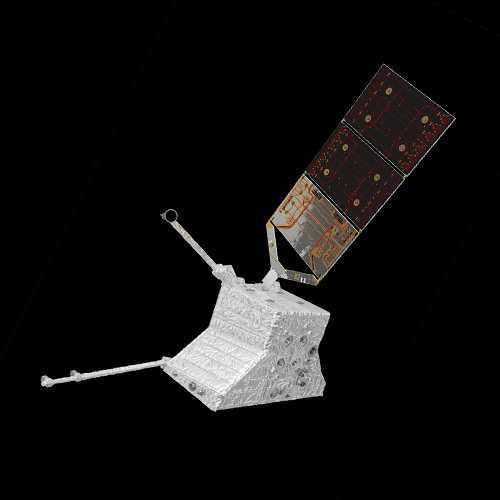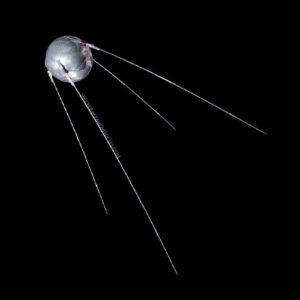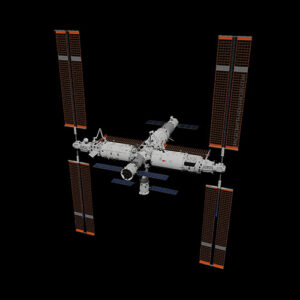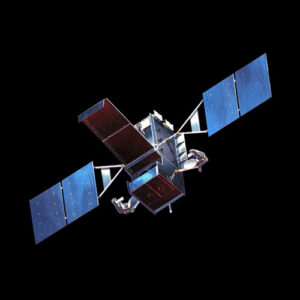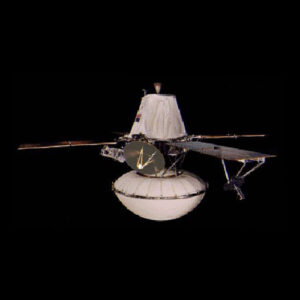The Mercury Planetary Orbiter (MPO) is a key component of the BepiColombo mission, a joint endeavor by the European Space Agency (ESA) and the Japan Aerospace Exploration Agency (JAXA) to explore Mercury. The MPO is designed to study Mercury’s surface, composition, and internal structure, providing comprehensive data about the planet’s geology and environment. Notable achievements of the MPO include its successful launch and its complex journey involving multiple gravity-assist maneuvers. The orbiter is set to arrive at Mercury in December 2025, where it will begin its detailed scientific mission, contributing significantly to our understanding of the innermost planet in the solar system.
Design and Construction
The Mercury Planetary Orbiter is engineered to endure the extreme conditions near Mercury, including high temperatures and intense solar radiation. The spacecraft features a compact, box-shaped design equipped with a suite of scientific instruments mounted on an external platform. Its design includes a high-gain antenna for communication with Earth and solar panels that can be tilted to avoid overheating while still generating sufficient power.
Constructed from lightweight, high-strength materials such as aluminum and titanium alloys, the MPO’s structure ensures durability while minimizing mass. The exterior is covered with a multi-layer insulation (MLI) blanket to protect against the harsh thermal environment. The spacecraft also includes radiators and heat pipes to dissipate excess heat and maintain operational temperatures for its instruments and systems.
One of the unique engineering challenges faced during the development of the MPO was ensuring effective thermal control. Given Mercury’s proximity to the Sun, the spacecraft had to be designed to withstand temperatures exceeding 450°C. Engineers developed an advanced thermal control system, including heat-resistant coatings and adaptive radiators, to manage the spacecraft’s temperature. Additionally, the need to conduct detailed scientific measurements necessitated the integration of highly sensitive instruments capable of operating under extreme conditions.
The MPO also required a propulsion system capable of executing complex maneuvers for its cruise phase, including multiple gravity assists from Earth, Venus, and Mercury. This involved precise planning and testing to ensure the spacecraft’s trajectory could be adjusted accurately to reach its destination.
Mission Objectives
The primary mission objectives of the Mercury Planetary Orbiter are to conduct a comprehensive study of Mercury’s surface, geology, and internal structure. This includes high-resolution mapping of the planet’s surface to analyze its composition and geological history. The MPO aims to investigate the planet’s mineralogy and surface chemistry, providing insights into the processes that have shaped Mercury over billions of years.
Another key objective is to study Mercury’s exosphere, the thin layer of gases surrounding the planet. By analyzing the composition and dynamics of the exosphere, scientists hope to understand the interaction between the planet’s surface and its surrounding space environment. This research will help elucidate how solar wind and micrometeoroid impacts contribute to the composition of the exosphere.
The MPO is also tasked with exploring Mercury’s magnetic field and magnetosphere. The orbiter will measure the strength and variability of the magnetic field, offering clues about the planet’s interior structure and the dynamics of its partially molten core. Understanding Mercury’s magnetosphere will shed light on its interactions with the solar wind and the broader space environment.
Secondary objectives of the MPO include investigating the presence of volatile elements on Mercury’s surface, such as water ice in permanently shadowed craters, and studying the planet’s tectonic activity. These ancillary objectives aim to provide a holistic view of Mercury’s physical and chemical properties, contributing to comparative planetology and enhancing our understanding of rocky planets in the solar system.
Launch and Deployment
The Mercury Planetary Orbiter was launched on October 20, 2018, as part of the BepiColombo mission, aboard an Ariane 5 rocket from the Guiana Space Centre in Kourou, French Guiana. The launch vehicle successfully delivered the spacecraft into its planned trajectory, beginning a seven-year journey to Mercury.
The cruise phase involved a series of complex gravity-assist maneuvers designed to adjust the spacecraft’s speed and trajectory. These included flybys of Earth in April 2020, Venus in October 2020 and August 2021, and Mercury itself in 2021 and subsequent years. These maneuvers were critical for reducing the spacecraft’s velocity to achieve a stable orbit around Mercury upon arrival.
During the cruise phase, the MPO encountered some challenges, including maintaining thermal control and ensuring the functionality of its instruments and systems in varying thermal environments. The mission team successfully managed these issues through careful planning and real-time adjustments.
Key milestones during the mission included successful communication and data transmission during flybys, which provided valuable data about the spacecraft’s performance and the space environment. The MPO’s arrival at Mercury, scheduled for December 2025, will mark the beginning of its primary scientific mission, where it will enter a polar orbit to conduct detailed studies of the planet.
Technical Specifications
- Dimensions: Approximately 2.4 x 1.7 x 2.2 meters (without solar panels).
- Weight: Around 1,150 kilograms.
- Payload Capacity: Equipped with 11 scientific instruments.
- Propulsion System: Bi-propellant chemical propulsion system for orbital adjustments and fine-tuning maneuvers.
- Power Source: Solar panels generating around 1.5 kilowatts of power, with battery backup.
- Instruments and Equipment:
- MERTIS: Mercury Radiometer and Thermal Imaging Spectrometer.
- MIXS: Mercury Imaging X-ray Spectrometer.
- MGNS: Mercury Gamma-ray and Neutron Spectrometer.
- PHEBUS: Probing of Hermean Exosphere by Ultraviolet Spectroscopy.
- SERENA: Search for Exospheric Refilling and Emitted Natural Abundances.
- SIMBIO-SYS: Spectrometers and Imagers for MPO BepiColombo Integrated Observatory SYStem.
- ISA: Italian Spring Accelerometer.
- MORE: Mercury Orbiter Radio-science Experiment.
- BELA: BepiColombo Laser Altimeter.
- SIXS: Solar Intensity X-ray and particle Spectrometer.
- MPO-MAG: Magnetometer for measuring Mercury’s magnetic field.
Current Status
As of 2024, the Mercury Planetary Orbiter is en route to Mercury, with its arrival expected in December 2025. The spacecraft continues to operate nominally, successfully completing its planned gravity-assist maneuvers and performing periodic system checks. The mission team at ESA monitors the spacecraft’s health and trajectory, making necessary adjustments to ensure a successful arrival and orbital insertion around Mercury.
